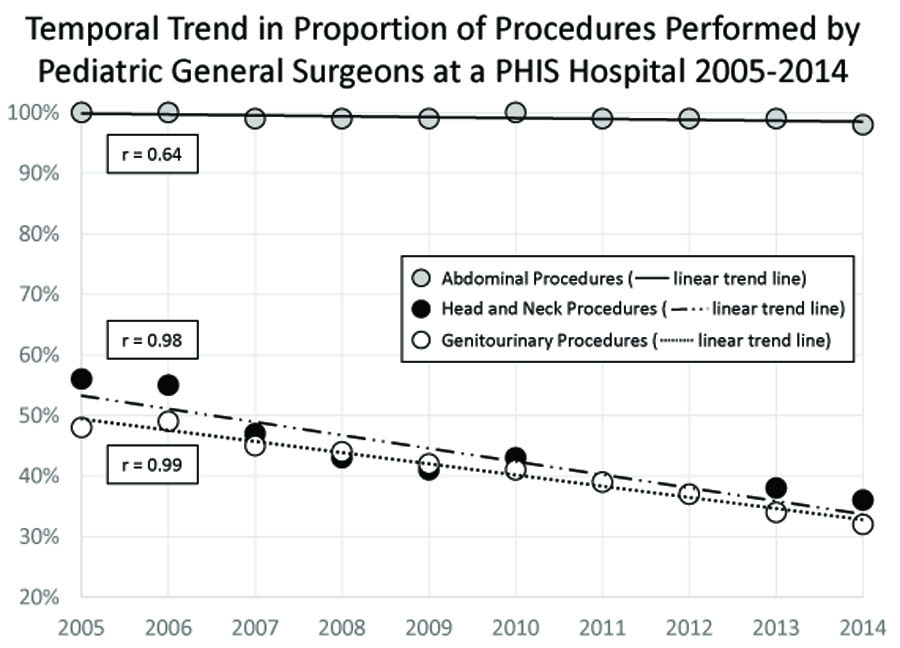Unnatural selection: the recent evolution of pediatric surgery in the United States, 2005-2014
*Daniel A. Reich1, *Katherine W Herbst1, Brendan T. Campbell2
1Connecticut Children's Medical Center, Hartford, CT;2Connecticut Children's Medical Center/University of Connecticut Health Center, Hartford/Farmington, CT
Objective: To determine whether the breadth of surgical cases being performed by pediatric surgeons in the United States has become less diverse over time.
Design: Retrospective Cohort.
Setting: Non-profit, tertiary care pediatric hospitals participating in the Pediatric Health Information System database.
Patients: Patients <12 years who underwent one of nine common outpatient surgical procedures between January 2005 and December 2014. Patients undergoing concurrent procedures, and procedures performed by surgeons other than pediatric surgeons, urologists, or otolaryngologists were excluded.
Main Outcome Measures: Temporal trends in the proportion of procedures performed by pediatric surgeons.
Results: Procedures were identified by ICD-9 code and grouped into three categories: 1) Abdominal (anal fistulotomy, umbilical herniorrhaphy, port placement), 2) Head/neck (thyroglossal duct cyst excision, branchial cleft excision, cervical lymph node excision), 3) Genitourinary (inguinal herniorrhaphy, orchiopexy, circumcision). Included were 194,026 procedures, 36,729 (19%) abdominal, 9,371 (5%) head/neck, and 147,926 (76%) genitourinary. Pediatric surgeons performed nearly all of the abdominal procedures which demonstrated little temporal change. Head/neck and genitourinary procedures showed a significant downward trend for pediatric surgeons during the study period (p<0.001). Head/neck cases performed by pediatric surgeons declined from 56.3% to 35.8%, while the proportion performed by otolaryngologists rose from 43.7% to 64.1%. Similarly, the proportion of genitourinary cases fell from 48.0% to 31.7% for pediatric surgeons, and increased from 52.0% to 68.0% for urologists.
Conclusions: The breadth of cases performed by pediatric surgeons has evolved significantly over time. These data provide relevant and actionable information for pediatric surgical workforce planning in the United States.

Back to 2017 Program
